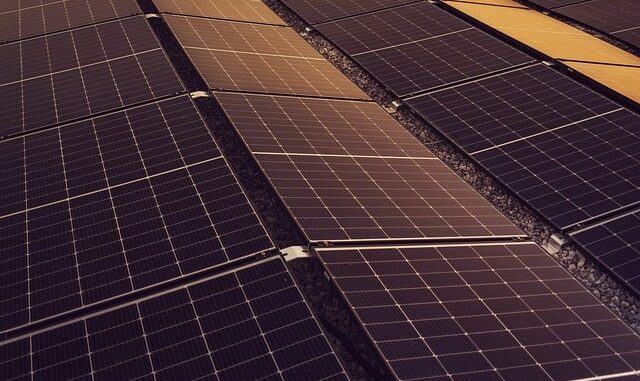
Summary
This article provides a comprehensive guide to maximizing energy efficiency in new building construction. It emphasizes an integrated design process, early investment in energy-efficient technologies, and the importance of commissioning. By following these steps, builders can create sustainable, cost-effective, and comfortable buildings.
Successful low-energy building design hinges on careful planning. Focus360 Energy can help.
** Main Story**
Supercharging Building Energy Efficiency: A Practical Guide
Want to build a super energy-efficient building? It’s totally doable, especially if you plan from the get-go. Instead of just slapping things together, think about efficiency as a key ingredient right from the start. This guide? Think of it as your cheat sheet to making it happen.
Step 1: Plant the Seed Early: Energy Efficiency from Day One
Seriously, integrate energy efficiency from the very beginning. New construction? It’s your golden ticket. Retrofitting later is way more expensive and complicated. Imagine trying to change the engine on a car while it’s speeding down the highway. That’s retrofitting! Instead, get your architects, engineers, and energy consultants in a room together early. Optimize everything: building orientation, where you put those windows, what materials you use. All of it matters.
Step 2: Teamwork Makes the Dream Work: Embrace Integrated Design
Get everyone on the same page, like, yesterday. Architects, engineers, contractors, the building owner – everyone. They need to be involved from the start. This isn’t a solo mission; it’s a collaborative effort. This way, you’re not just thinking about individual components; you’re looking at the whole building as one big, energy-saving machine. When everyone’s in the loop, it helps see the bigger picture, optimize building systems, and get peak performance.
Step 3: Pay to Play: Invest Early in What Matters
Yeah, energy-efficient tech and materials can seem pricey upfront. But think long-term. Those initial costs? They’ll pay for themselves with energy savings and boosted property value. I remember when my friend told me he skipped on the good windows for his new build, saying it was a waste of money. Now he’s paying through the roof for heating, and he’s kicking himself. Don’t be like my friend.
Step 4: Go for Gold: Aim High
Don’t settle for average, because nobody remembers average. Set some seriously ambitious energy targets. Think the 2030 Challenge, or similar high bars. And consider green building certifications – LEED or BREEAM. It’s like getting a gold star for your building, and it will draw attention from potential clients, and tenants.
Step 5: Frame It Like a Pro: Advanced Techniques
For wood-framed buildings, ditch the old ways. Try advanced framing techniques, like optimum value engineering. Basically, you use less lumber and get better insulation. Less waste, tighter walls, more efficiency – it’s a win-win.
Step 6: Keep It Cool: Rock a Cool Roof
Slap on a cool roof – materials that reflect sunlight. This keeps the building cooler, especially in hot climates, and eases the burden on your cooling system. It’s simple, but it’s effective. This is especially beneficial in warmer climates, where it can drastically reduce peak energy demand.
Step 7: Seal the Deal: Insulation and Air Tightness
Insulate everything! Walls, roofs, floors, you name it. And don’t skimp on quality. Then, air-seal like your life depends on it. Seal those gaps around windows and doors. Drafts are the enemy. You’ve got to create a really tight envelope around the building to minimize heat transfer.
Step 8: Window Shopping: High-Performance Windows and Doors
Upgrade to energy-efficient windows and doors. Double or triple glazing, low-E coatings, insulated frames – the works. Properly sealed windows and doors are crucial for a comfy indoor environment and slashed energy bills, you’ll notice the difference!
Step 9: HVAC Harmony: Optimize Your Systems
Choose your HVAC system wisely. Heat pumps or geothermal systems are great options. And don’t get an oversized system; right-size it! Optimize that ductwork too; you don’t want energy leaking out of poorly designed ducts. Smart controls, like programmable thermostats and occupancy sensors? Yes, please. They can really boost HVAC efficiency.
Step 10: Smarty Pants: Integrate Smart Building Tech
Dive into smart building tech. Building management systems (BMS), energy monitoring tools, the whole shebang. Track energy use, find areas to improve, and optimize things in real time. Automate your lighting, HVAC, all of it, based on who’s in the building and the environment outside.
Step 11: Check and Double-Check: Commission the Building
Commissioning is a must. It’s a thorough check-up to ensure all systems are installed, tested, and running exactly as they should. It confirms that your building is meeting those energy performance goals you set.
Step 12: Shout It From the Rooftops: Celebrate and Promote
Don’t be shy! Tell everyone about your building’s energy efficiency. Brag about those sustainable features and cost savings. It raises awareness and encourages others to follow suit. And consider using programs like Portfolio Manager to track and compare your building’s energy performance. Because let’s face it, who doesn’t like showing off a little?
Ultimately, if you can plan ahead and make a few smart choices, you can create a building that’s not only good for the environment but also saves you money in the long run. And who wouldn’t want that?


Be the first to comment